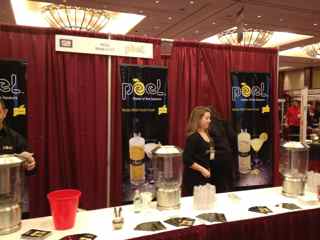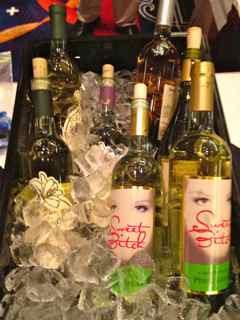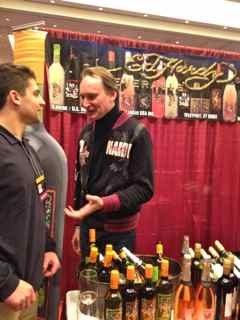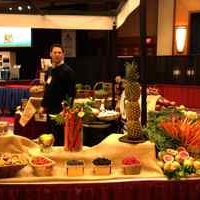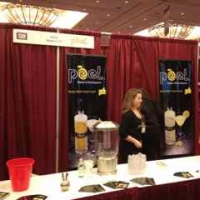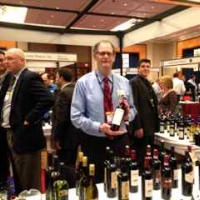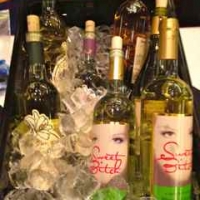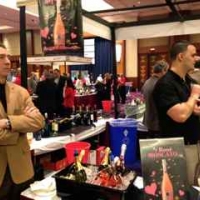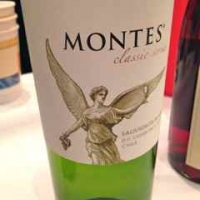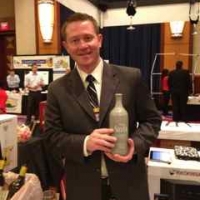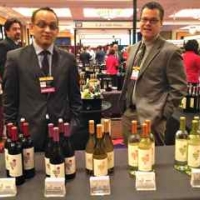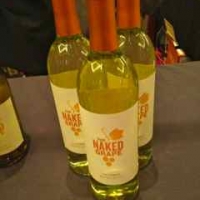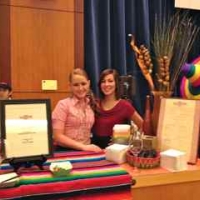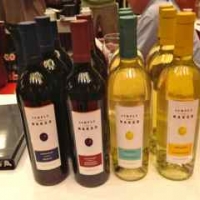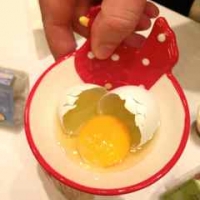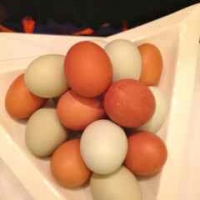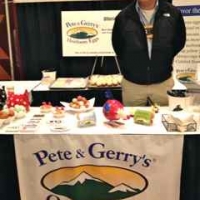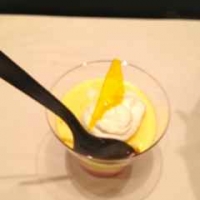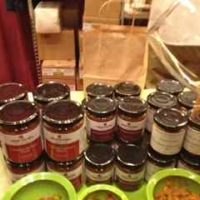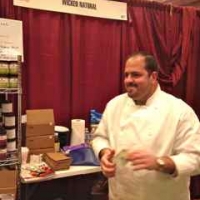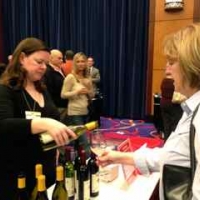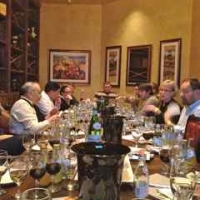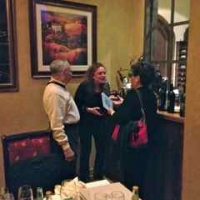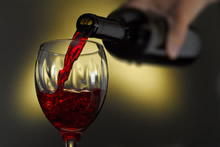I attended the 2012 Mohegan Sun Winefest early on Sunday hoping to avoid some of the thirsty throngs at this popular wine tasting event. Armed with my stemware, I filed in at 11:00 with other trade and press members and surveyed the room for a plan of attack. I was met with a mouth-watering display of fresh Connecticut grown fruits and vegetables displayed by Sardilli Produce and Dairy, a foretelling of the bounty that lay within.

Sardilli supports locally grown sustainable agriculture, supplying restaurants and institutions in Connecticut, Massachusetts, Rhode Island and Westchester County, New York.
I delved into my first tasting at a booth across from Sardilli called “PEEL” that was touting fine liqueurs made in Connecticut with fresh fruit. The lemons in the Limoncello may not have been locally grown, but the libation was refreshing, delicious and beautifully bottled just the same.
As I moved further into the body of the room, I gazed at the sea of wine distributors hawking their portfolios. A cursory look revealed that many of these companies were highlighting a current trend I am enjoying, the resurgence of the muscat grape. Muscat is grown all over the world and is usually easily recognizable by its powerful aroma and grapey flavor. The fourth most planted grape in Italy (known there as moscato), it is widely used for sparkling wines such as Asti Spumante, and many countries use the grape for making sweet dessert wines. Now the muscat grape has come back into favor and can be found in every style from still white to rosé to bubbly. While I typically minimize my dessert wine tasting at events such as these, I was drawn in by a sweet little bottle of Pellegrino 2010 Passito de Pantelleria perched enticingly on the Frederick Wildman table. Made from 100% moscato, the wine was sweet without being syrupy and the stone fruit notes with just a hint of spice left me wanting another taste. However, the rapidly growing sea of sippers forced me to move on. I paused at the table of the highly recognizable brand, Barefoot Wine & Bubbly, to pick up a purple-footed key chain and try their new Moscato Spumante, a fun, fruity and creamy sparkler at a good price point. In fact, Barefoot Bubbly is the most awarded California wine brand under $15.
Further exploration of the room revealed another current trend as cleverly named wines reared their naughty heads with labels such as “Sweet Bitch,” “Sassy Bitch,” and “Mommy’s Time Out.” And while these playful names may be no more revealing of the contents within than many of the French labels the uninitiated struggle to interpret, they certainly catch the eye more quickly. I have been seeing more and more of these wine bottles on the shelves that attempt to shock, awe and delight wine buyers with attention grabbing labels. This would account for the multitude of banners that hung like an airborne celebrity A-list around the room. The well-respected names of generations of winemakers are no longer the only way to brand wine. These days, many of the names that are responsible for closing the deal on our wine purchases are recognizable from different areas of our lives – Francis Coppola (movies), Jeff Gordon, (car racing) Ed Hardy (fashion). As much as I enjoy the tattoo-esque designs of Christian Audigier, it may take me a little more time to grow accustomed to the jeans and high school jacket clad Ed Hardy rep at wine shows. One of the more successful fads they have capitalized on is sangria in a bottle. If you’re short on time and fresh fruit, pick one up and bring it along to your next picnic or barbeque.
Bottles of unoaked varieties, both red and white, abounded. I tried an unoaked chardonnay from the “Simply Naked” line. The idea is to allow the variety’s natural characteristics to emerge unmasked by the flavors that accompany oak aging. I found the chardonnay light and citrusy.
Always on the lookout for wineries embracing biodynamic, organic and sustainable farming methods, I was pleased to see some of my favorites in attendance. The wines of Grgich Hills Estate made from 366 acres of organically and biodynamically farmed grapes are always a pleasure to taste. Slocum & Sons brought along one of my favorite new discoveries, a tannat from Bodegas Carrau of Uruguay. This winery is doing some wonderfully innovative things with sustainable and organic farming. Their wines made from the lesser-known tannat grape are worthy of exploring. For those seeking something closer to home, the sole representative of the Connecticut wine industry in attendance was Jonathan Edwards Winery. In addition to pouring their Connecticut cabernet franc and chardonnay, this local farm winery was serving up some of their well-known wines made from Napa Valley grapes.
Food tables were set up along the perimeter of the room with pre-purchased food coins required to taste the culinary offerings. I enjoyed tacos from SolToro Tequila Grill and sushi from Feng Asian Bistro. Both were excellent. Although the wine tables seemed to be the main draw, there was no shortage of entertainment for food lovers in the crowd. Over the course of the weekend, a main stage on one side of the room played host to an oyster shucking competition, grape stomp, and celebrity chef demonstrations from such well-known names as Bobby Flay, Daisy Martinez and Todd English. Diehard foodies could sign up for a Celebrity Chef Dine Around on Saturday evening to see their favorite chefs cooking up a storm.
By 12:45 the thirsty throngs had indeed arrived and sipping space was at a premium. I decided to make my way to calmer territory and headed out to Todd English’s Tuscany for a wine seminar given by Aurelie Botton of Marnier Lapostolle. Lapostolle is an organic and biodynamic winery in Chile. Held in the intimate setting of a private dining room, my seminar was attended by 22 guests seated at a banquet table complete with cheese platters, table settings and 4 pre-poured glasses of Lapostolle wine. Lapostolle was founded in Chile in 1994 by Alexandre Marnier Lapostolle, the creator of Grand Marnier, and is now run by his great granddaughter, Alexandra. Ms. Botton told the history of the carménère grape in Chile, at one time mistaken for merlot, and how carmenere fell out of favor in its native Bordeaux because there are too many clouds there. Apparently, a large amount of UV rays are required to dissolve the substantial quantity of pyrazine present on the skin of carmenere grapes. The climate, coupled with the fact that carménère was virtually annihilated by phylloxera in France in the 1800’s, has rendered this grape all but extinct in France. Chile on the other hand is the perfect home to this deeply crimson red, smoky, spicy variety with hints of green peppers. In fact, the introduction of carménère vines into Chile predates the phylloxera outbreak in France and therefore Lapostolle’s vines retain their original roots rather than having been grafted onto phylloxera resistant roots, as is the common practice throughout the world today.
As I soaked in the history, I sipped delightful sauvignon blanc, chardonnay and carménère wines. The wines tasted all the better knowing that the vineyards are organic and biodynamic. It is the belief among biodynamic winemakers and their followers that biodynamic viticulture results in a wine that is a truer reflection of the earth in which the grapes are grown as well as of the vines’ surroundings – often referred to as terroir. Ms Botton may have lost a listener or two as she briefly described the preparations and unusual rituals that are the heart of the process, but I soaked that in as well. Some of the best wines I have tasted are created using biodynamic viticulture. For those seminar participants who may not have been buying into the concept, there were still other wonderful and innovative techniques being employed at Lapostolle about which they could get excited such as the use of indigenous yeasts and the introduction in 2005 of their state-of-the-art 100% gravity flow winery, Clos Apalta. With the discussion about the newer winery came the grand finale, a glass of Clos Apalta wine. This blend of carménère, cabernet sauvignon and merlot is made with whole cluster fermentation, a process similar to carbonic maceration in Bordeaux, and hand-destemmed grapes. The result is magnificent. A frequently awarded wine, Clos Apalta earned a place on Wine Spectator’s 2008 Top 100 list and was named Best New World Winery 2008 by Wine Enthusiast.
The Mohegan Sun Winefest has something for everyone. Here you can consume delicious food, rub elbows with celebrity chefs, or experience the thrill of a live oyster-shucking contest. Wines can be found in a range of prices beginning with savvy selections for under $10 in the Grand Tasting to some of the finest wines in the world at the Elite Cru Tasting. If wine is not your passion, bourbon and beer tastings can be enjoyed as well. The Grand Tasting is a great way for the uninitiated, truly patient and/or truly thirsty to sample many different wines. For the well seasoned and less patient wine drinkers out there (I consider myself both), the seminars and special events provide more detailed information and the opportunity to engage in more detailed conversations with winemakers and wine educators.
Just pick your poison.
